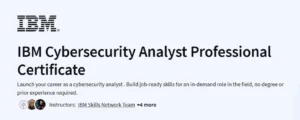What will you in The Complete Guide to Becoming a Software Architect Course
- Master the principles and practices of software architecture and system design.
- Apply architectural patterns like layered, microservices, event-driven, and cloud-native architectures.
- Use UML and documentation techniques to model and communicate architecture.
- Evaluate trade-offs in scalability, performance, security, and maintainability.
- Lead technical teams, conduct architecture reviews, and mentor developers.
- Prepare for architecture interviews and certification frameworks (TOGAF, AWS/Azure Architect).
Program Overview
Module 1: Introduction to Software Architecture
⏳ 45 minutes
Define the role and responsibilities of a software architect.
Understand stakeholders, architectural drivers, and quality attributes.
Explore the architecture decision record (ADR) process.
Module 2: Architectural Patterns & Styles
⏳ 1 hour
Compare monolithic vs. layered vs. microservices architectures.
Implement event-driven, service-oriented, and hexagonal patterns.
Assess when to apply each style based on project needs.
Module 3: Modeling & Documentation Techniques
⏳ 1 hour 15 minutes
Create use-case diagrams, component diagrams, and sequence diagrams in UML.
Develop C4 model views for context, containers, components, and code.
Maintain living documentation and ADRs.
Module 4: Non-Functional Requirements & Trade-Offs
⏳ 1 hour
Quantify scalability, performance, availability, and security requirements.
Perform trade-off analysis using ATAM and risk assessment.
Apply caching, sharding, and load-balancing strategies.
Module 5: Microservices & Cloud-Native Architecture
⏳ 1 hour 30 minutes
Design microservice boundaries and inter-service communication.
Use API gateways, service meshes, and circuit breakers.
Leverage containerization (Docker) and orchestration (Kubernetes).
Module 6: Data Architecture & Integration
⏳ 1 hour
Choose between SQL, NoSQL, and polyglot persistence.
Implement event sourcing, CQRS, and stream processing patterns.
Design data pipelines and ETL/ELT workflows.
Module 7: Security, Compliance & DevSecOps
⏳ 45 minutes
Integrate security by design: authentication, authorization, and encryption.
Align architecture with compliance standards (GDPR, HIPAA).
Incorporate automated security scans and policy as code.
Module 8: Leadership, Governance & Reviews
⏳ 1 hour
Facilitate architecture review boards and design walkthroughs.
Mentor and advocate best practices within teams.
Establish governance frameworks and versioning for architecture artifacts.
Module 9: Case Studies & Real-World Scenarios
⏳ 1 hour
Analyze architecture of high-scale systems (e-commerce, streaming, IoT).
Learn from successes and failures of industry-leading platforms.
Apply lessons to capstone design exercise.
Module 10: Career Path & Certification Prep
⏳ 30 minutes
Prepare for TOGAF, AWS/Azure Solutions Architect, and interviews.
Develop a personal learning roadmap and portfolio projects.
Understand salary benchmarks and negotiation strategies.
Get certificate
Job Outlook
- High-Demand Roles: Software Architect, Solutions Architect, Enterprise Architect.
- Salary Potential: ₹15–35 LPA in India; $100 K–$160 K in the U.S.
- Growth Areas: Cloud architecture, microservices, IoT platforms, AI/ML infrastructure.
- Career Advancement: Positions often lead to technical leadership, CTO, or chief architect roles.
Specification: The Complete Guide to Becoming a Software Architect
|





